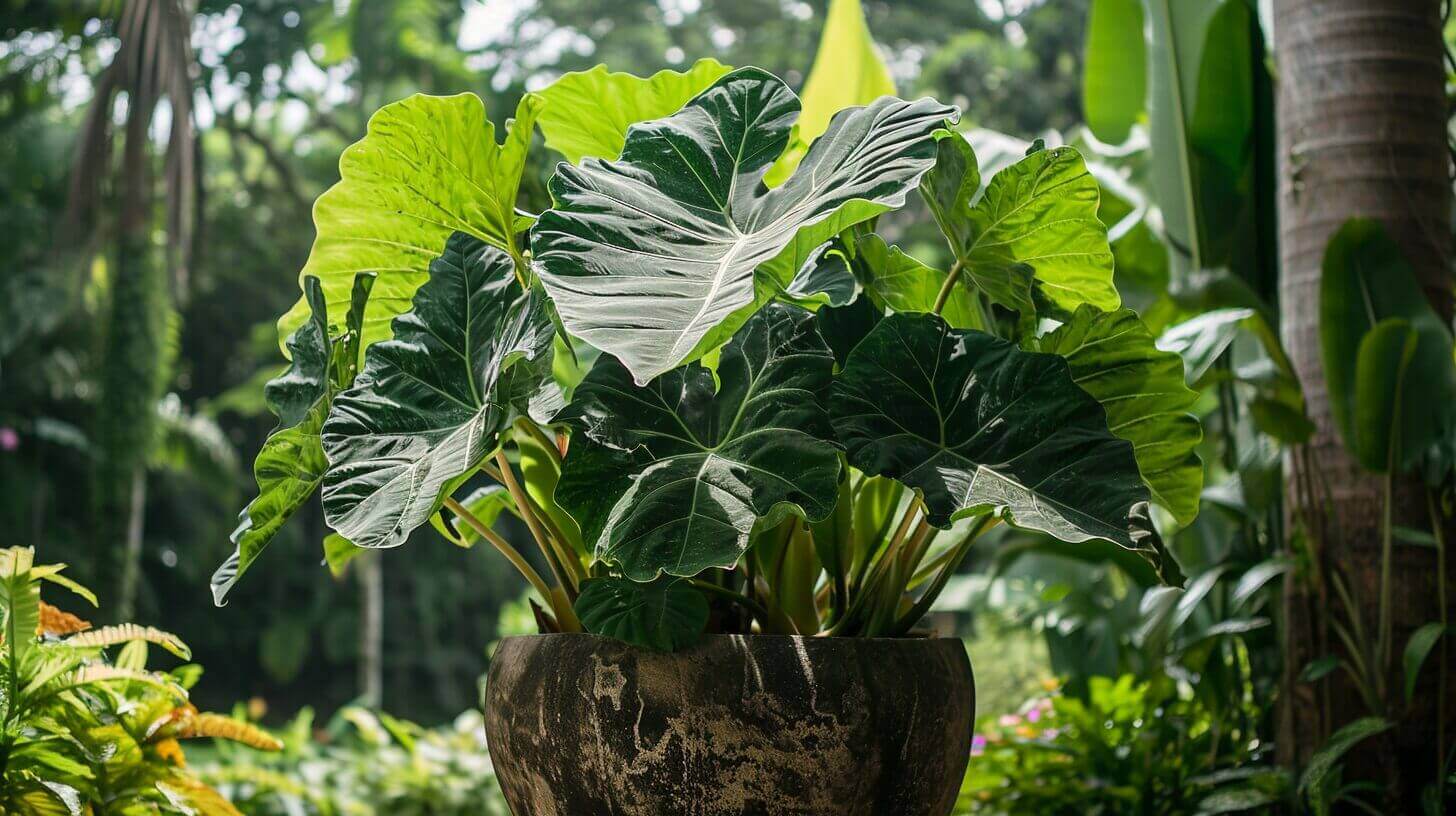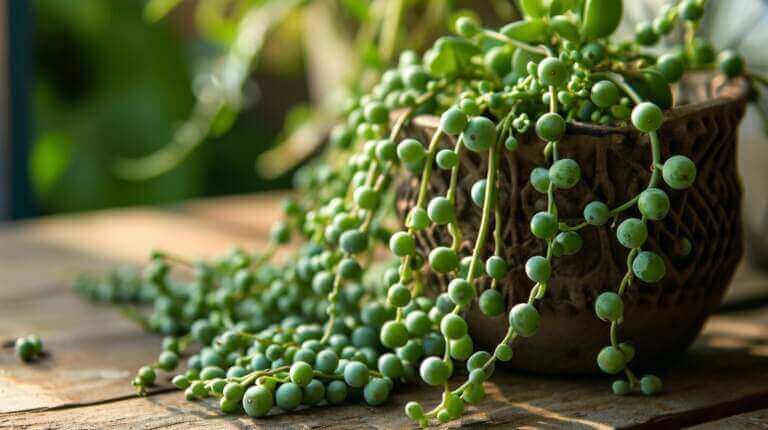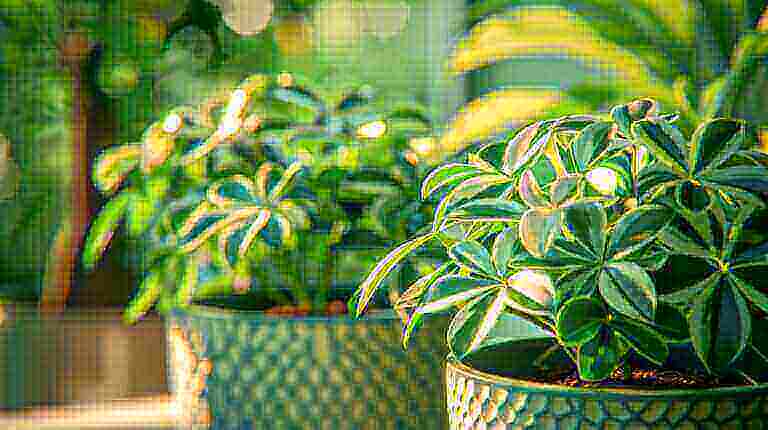How Big Do Elephant Ear Plants Get? Maximum Size and Growth Rate Explored
Elephant ear plants, also known as colocasias, are tropical perennial plants known for their large, heart-shaped leaves. If you’ve ever wondered how big these plants can actually get, you’re in the right place. In this article, I will explore the maximum size and growth rate of elephant ear plants, providing you with all the information you need to know.
Some varieties of elephant ear plants can grow leaves that are larger than a human, reaching sizes of up to 9 feet long and 5 feet wide. Keep in mind that the size of elephant ear plants can vary depending on the species and cultivar. To achieve their maximum size, these plants require adequate water, nutrients, and a favorable growing environment.
Key Takeaways:
- Elephant ear plants can grow leaves larger than a human, reaching up to 9 feet long and 5 feet wide.
- The size of elephant ear plants can vary depending on the species and cultivar.
- Adequate water, nutrients, and a favorable growing environment are essential for achieving maximum size.
Learn to Grow Elephant Ear Plants
Elephant ear plants, also known as colocasias, can be grown both indoors and outdoors. Whether you choose to grow them as indoor plants or outdoor plants, they require specific care to thrive and reach their maximum size. Here are some tips on how to grow and care for elephant ear plants:
Indoor Elephant Ear Plant Care
If you decide to grow elephant ear plants indoors, it is important to choose a large pot with good drainage. The pot should be at least 2 to 3 times the size of the plant’s root ball. Place the plant grow best in a bright location with indirect sunlight, avoid full sun as it might burn the leaves. The ideal temperature range for indoor elephant ear plants is between 65 to 85 degrees Fahrenheit. Keep the soil consistently moist, but avoid overwatering as it can lead to root rot.
Outdoor Elephant Ear Plant Care
When growing elephant ear plants outside in the outdoors, remember that elephant ears do best in a location that receives either full or partial sun, depending on your climate. The soil should be well-draining to prevent waterlogged roots. Water the plants regularly, keeping the soil moist but not soggy. Apply a balanced fertilizer high in nitrogen every 2 to 4 weeks to promote healthy growth and lush foliage.
How to Propagate Elephant Ear Plants
Propagating elephant ear plants is a rewarding way to expand your collection or share these beautiful plants with friends and family. There are several methods you can use to propagate elephant ear plants, including seed collection, division, and separating new plantlets that form at the rhizome tips.
Propagation by Seed
One method of propagating elephant ear plants is through seed collection. Wait until the seed pods on the plant have turned brown and dried out. Collect the seeds and plant them in well-draining soil, keeping them moist but not waterlogged. Germination typically occurs within 21 days, and once the seedlings have grown large enough, they can be transplanted into individual pots or directly into the garden.
Propagation by Division
Division is another common method of propagating elephant ear plants. This involves separating the larger corms or collecting offsets that have formed around the main plant. Carefully dig up the plant and gently separate the corms or offsets, making sure each division has roots attached. Replant the divisions in their desired location, ensuring they have enough space to grow and thrive.
Propagation by Separating New Plantlets
Elephant ear plants also produce new plantlets that form at the tips of their rhizomes. These plantlets can be carefully separated from the parent plant and replanted to grow into new plants. Make sure each plantlet has roots attached before transplanting. Providing the new plantlets with proper care, including adequate water and nutrients, will help ensure successful growth.
By utilizing these propagation methods, you can easily expand your collection of elephant ear plants and enjoy their stunning foliage in various parts of your garden or share their beauty with others.
How to Overwinter Elephant Ear Plants
Overwintering elephant ear plants is essential in colder regions where temperatures drop below freezing. These tropical plants are not cold hardy and require special care to survive the winter months. Here are some tips to help you protect your elephant ear plants during the colder season:
Digging up the Bulbs
Carefully dig up the bulbs of your elephant ear plants using a garden fork or shovel to remove the plant tubers before the first frost. It’s important to handle the bulbs gently to avoid damaging them. Once dug up, shake off the excess soil and bring your elephant ear indoors allow the bulbs to dry for a few days in a cool, dry location. This drying period helps prevent rot during storage.
Choosing the Right Storage Location
When storing the bulbs, select a cool and dry area, such as a basement or garage, where temperatures remain above freezing but are not too warm. Avoid storing the bulbs in areas with high humidity, as this can lead to mold or rot. You can place the bulbs in paper bags or store them in plastic containers with ventilation holes to allow for air circulation.
Monitoring Hardiness Zones
Understanding the hardiness zones in your region is crucial for successful overwintering. Different elephant ear varieties have varied hardiness levels, which indicate the lowest temperatures they can tolerate. Refer to the hardiness zone map to determine if your plants can survive the winter outdoors or if they need to be brought indoors for protection.
| Plant Variety | Hardiness Zone |
|---|---|
| Colocasia gigantea ‘Thailand Giant’ | Zone 8b |
| Colocasia esculenta ‘Pink China’ | Zone 6 |
Mulching for Additional Protection
For added insulation, you can mulch your elephant ear plants with a layer of shredded leaves or straw. This will help protect the bulbs from freezing temperatures and provide some insulation against extreme cold. Apply the mulch around the base of the plant, making sure not to cover the central growing point.
By following these overwintering tips, you can ensure the survival of your elephant ear plants and enjoy their vibrant foliage year after year. Remember to check the specific care requirements for your plant variety and adjust your overwintering strategy accordingly.
Clumping versus Running Elephant Ear Plant
When it comes to choosing elephant ear plants for your garden, understanding the difference between clumping and running varieties is key. Clumping varieties, as the name suggests, form attractive vase-shaped clusters and do not spread aggressively. These types of elephant ear plants are well-suited for smaller gardens or containers where space may be limited.
Running varieties, on the other hand, have above-ground runners that can quickly colonize an area and take over if not managed properly. While their rapid growth can be appealing in some situations, they require more careful planning and maintenance to prevent them from becoming invasive. Running varieties are best suited for larger gardens or open areas where their spreading habit can be controlled.
When selecting elephant ear plants, consider the available space and the desired growth habits. Clumping varieties are ideal for those looking for a more compact and contained plant, while running varieties are well-suited for those who want a more dramatic and spreading display in their garden.
The History of Elephant Ear Plants
Elephant ear plants have a rich history and have been cultivated for thousands of years as a staple food crop in tropical regions. They are native to various parts of Asia, Indonesia, Malaysia, the Pacific Islands, and tropical America. These plants have served as a vital source of sustenance in many cultures, thanks to their edible corms, which are high in starch and provide nourishment.
Throughout history, elephant ear plants have been cultivated and harvested for their culinary uses. Their large, nutrient-rich corms have been incorporated into traditional dishes and cuisines, providing sustenance and flavor. The starchy corms can be cooked, mashed, or even ground into flour for various culinary applications.
Over time, elephant ear plants have also been bred and cultivated for their ornamental characteristics. Many new varieties have been developed, boasting unique colors, shapes, and sizes. These ornamental elephant ear plants have become popular choices in gardens and landscapes, adding beauty and tropical vibes to outdoor spaces.
Culinary Uses of Elephant Ear Plants
Elephant ear plants have been utilized in a wide range of culinary creations throughout history. The starchy corms are versatile and can be prepared in various ways. They are often boiled, steamed, fried, or roasted to make delicious and nutritious dishes.
“We have been incorporating elephant ear corms into our traditional cuisine for centuries. They add a unique flavor and texture to our dishes, and they are a valuable source of sustenance in our tropical climate.” – Local Chef
In some cultures, elephant ear plants are used in traditional recipes such as curries, stews, soups, and side dishes. The corms can also be sliced and deep-fried to create crispy chips or tempura-style fritters. Additionally, the leaves of the plant can be utilized as natural wraps for steaming or grilling food.
Expansion into Ornamental Plant
While elephant ear plants have a long history as a staple food crop, they have also gained popularity in ornamental gardening. Their large, vibrant leaves and tropical appearance make them visually striking additions to gardens, landscapes, and even indoor spaces.
The cultivation of new varieties with unique colors and shapes has further enhanced the ornamental value of these plants. From deep purples and greens to variegated patterns, elephant ear plants offer a wide range of options for those looking to create visually stunning displays.
Types Of Elephant Ear Plants: Varieties and Combinations
Elephant ear plants offer a wide variety of choices when it comes to selecting the perfect foliage for your garden. With their attractive, large leaves and unique shapes, these plants make a statement wherever they are planted. There are numerous elephant ear varieties to choose from, each with its own distinct characteristics. Here are some popular options:
| Elephant Ear Varieties | Description |
|---|---|
| Colocasia esculenta ‘Black Magic’ | A stunning variety with dark purple-black leaves that contrast beautifully with other plants. |
| Alocasia macrorrhiza | Known as the Giant Elephant Ear, this plant has enormous, heavily veined leaves, making a dramatic impact in the garden. |
| Xanthosoma sagittifolium | This variety features arrow-shaped leaves with bright green coloration and a glossy texture. |
When it comes to combining elephant ear plants with other foliage plants, the possibilities are endless. These plants make great companions for a variety of other species, adding texture, color, and interest to your garden. Some popular choices for companion plants include bananas, castor bean, caladiums, and ornamental grasses. These combinations can create stunning displays that are sure to impress.
In addition to traditional garden planting, elephant ear plants are also well-suited for container gardening. Their large, eye-catching leaves make a bold statement and can serve as the focal point of any patio or deck. Mix and match different elephant ear varieties with other plants to create interesting and visually appealing container displays.
Whether you’re looking to add a touch of tropical flair to your garden or create a show-stopping container display, growing elephant ear plants offers a world of possibilities. With their diverse range of varieties and beautiful combinations with other foliage plants, these plants are sure to leave a lasting impression.
Plant Combination Ideas
- Colocasia esculenta ‘Black Magic’ paired with Caladium ‘White Queen’ for a striking contrast of dark and light foliage.
- Alocasia macrorrhiza combined with ornamental grasses, such as Miscanthus sinensis ‘Morning Light,’ for an elegant and textured look.
- Xanthosoma sagittifolium planted alongside bananas to create a lush, tropical oasis in your garden.
Tips for Growing Healthy Elephant Ear Plants
To ensure healthy growth and maximum size of elephant ear plants, I recommend following these essential care and maintenance tips:
1. Water: Elephant ears grow best with regular watering moist soil but not waterlogged. During hot summer months, it is important to provide adequate water to prevent the soil from drying out.
2. Fertilizer: Fertilize your elephant ear plants with a balanced fertilizer that is high in nitrogen. This will promote vigorous growth and ensure that your plants receive the necessary nutrients.
3. Sunlight: While elephant ear plants prefer bright, indirect sunlight, they can tolerate partial shade. Place them in a location where they will receive adequate light for optimal growth.
4. Soil: Choose well-draining soil for your elephant ear plants. This will prevent waterlogging and root rot, ensuring that your plants stay healthy. Elephant ears need rich soil with organic matter, such as compost, can help improve soil drainage.
5. Maintenance and Pruning: Regular maintenance is key to keeping your elephant ear plants healthy. Remove any dead or yellow leaves to maintain the overall appearance and health of the plants. Pruning can also be done to control the size and shape of your plants.
Following these tips will help you grow healthy and thriving elephant ear plants that will enhance the beauty of your garden or indoor space.
FAQ
How big do elephant ear plants get?
Elephant ear plants can grow to be quite large, with some varieties having leaves that reach sizes of up to 9 feet long and 5 feet wide.
How do I grow elephant ear plants?
Elephant ear plants can be grown both indoors and outdoors. Indoors, they require bright, indirect sunlight and a large pot with good drainage. Outdoors, they should be planted in well-draining soil and placed in a location that receives full or partial sun, depending on the climate.
How do I propagate elephant ear plants?
Elephant ear plants can be propagated through methods such as seed collection, division, and separating new plantlets that form at the rhizome tips.
How do I overwinter elephant ear plants?
In colder zones, it is necessary to bring elephant ear plants indoors before the first frost. Dig up the tubers, dried, and stored in a cool, dry location. Mulching with shredded leaves can provide additional protection during the winter months.
What is the difference between clumping and running elephant ear plants?
Clumping varieties have an attractive vase shape and do not spread aggressively, making them suitable for smaller gardens or containers. Running varieties have above-ground runners that can quickly colonize an area if not managed properly.
What is the history of elephant ear plants?
Elephant ear plants have a rich history and have been cultivated for thousands of years as a staple food crop in tropical regions. They are native to various parts of Asia, Indonesia, Malaysia, the Pacific Islands, and tropical America.
What are some popular varieties of elephant ear plants?
Some popular varieties include Colocasia esculenta ‘Black Magic,’ Alocasia macrorrhiza, and Xanthosoma sagittifolium.
How do I grow healthy elephant ear plants?
To ensure healthy growth, water the plants regularly, provide them with bright, indirect sunlight, use well-draining soil, and fertilize with a balanced fertilizer high in nitrogen. Remove any dead or yellow leaves to maintain the overall appearance and health of the plants.
How do I plant elephant ears indoors in a pot?
Elephant ears are tropical plants that can be grown as houseplants in pots. Start by choosing a container at least 12 inches wide with drainage holes. Use a rich, well-draining potting mix and plant the elephant ear tubers 2-3 inches deep, spreading the roots. Place in a spot with bright, indirect light. Keep the soil consistently moist but not waterlogged. Feed weekly with liquid fertilizer once new leaves emerge. As the plant grows, it may need support from a stake. Move outdoors in summer if desired. Bring back in before frost. Cut foliage back to the soil in fall and reduce watering to overwinter dormant tubers indoors. Start watering again in spring when new growth appears. With proper care, elephant ears thrive indoors in pots.
How Fast do Elephant Ears Grow?
Mature elephant ear plants reach heights of 4-6 feet tall and 8 feet wide within one growing season. The exact growth rate depends on factors like the variety, sunlight, soil quality, moisture, and temperature. With their rapid growth rate, established elephant ear tubers can quickly fill out a space as their big leaves unfurl each year.







